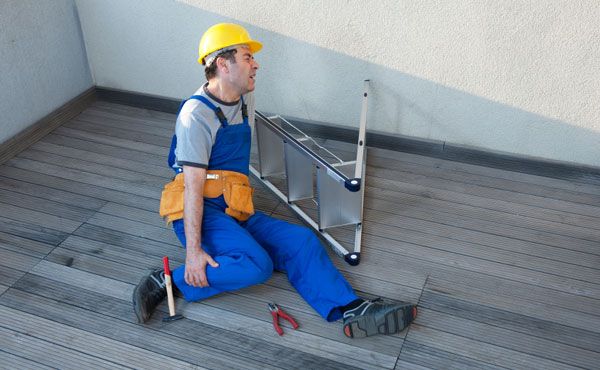There are many personal injury lawyers out there that handle workplace injury claims. Attorneys such as the Lamber Goodnow law firm are busy because workplace injuries are all too common. This even includes injuries that happen in an office setting and not just in industrial areas.
It shouldn’t be a given that you will get injured at work and that it’s just a matter of time. Although the responsibility of workplace safety falls on the shoulders of your employer, you can take measures to improve your safety. It is up to everybody to try to avoid situations that can lead to injury. In this article, we will go over several tips to keep you safe at work.
1 – Report hazards
It is important to report hazards as soon as they are noticed to help prevent accidents and injuries in the workplace. This is for everybody’s safety including your own.
The first step is to clearly identify the hazard and its location. Notify your supervisor or the appropriate person about the hazard as soon as possible. Include any relevant information about the hazard, such as when it was noticed, how it was noticed, and any possible causes. Document the hazard and the steps taken to report it. This may include writing a report or filling out an incident report form.
Click here – Why Early Math Learning Is That Important For Kids
2 – Stay organized
A cluttered and disorganized workplace is one of the biggest safety risks at work. If your work area is not organized then there are more hazards likely to cause a problem.
Establish designated storage areas for tools, equipment, and other supplies to help keep the workplace clutter-free. Choose a location for the storage area that is convenient and easily accessible for employees, but also out of the way to minimize clutter and hazards.
Allocate enough space for the items to be stored in an organized manner. This may include shelving, cabinets, bins, or other storage solutions. Implement the chosen storage solutions and organize the items in a logical and easy-to-access manner.
Regularly clean and organize the workplace to help prevent clutter and hazards from accumulating.
3 – Follow safety procedures
An employer usually has a list of protocols and procedures relating to safety that must be followed. Usually, when an injury happens it is because people weren’t following the procedures that are clearly outlined.
Follow proper operating procedures for all equipment and machinery, and be sure to use safety guards and other protective devices as required. This may include reading the operating manual and following any safety warnings or instructions.
Wear protective gear and equipment as required for the equipment or machinery. This may include hard hats, safety glasses, gloves, and earplugs. Know how to stop the equipment or machinery in case of an emergency. Be familiar with the location of emergency shutdown procedures and follow them if necessary.
4 – Use safety equipment
Using safety equipment is an important part of maintaining a safe workplace. Safety equipment is designed to protect you from accidents and injuries while on the job. By using safety equipment, you can help reduce the risk of accidents and injuries in the workplace. It is important to wear the appropriate safety equipment for the job and to use it correctly to ensure maximum protection.
By using safety earplugs, for example, you can help protect your hearing and reduce the risk of hearing-related issues in noisy environments. Safety earplugs are designed to protect the ears from loud noises and other hazards. They are made of soft, pliable materials that are inserted into the ear canal to reduce the level of noise that enters the ear.
Click here – When Should I Get In Touch With A Truck Accident Lawyer?
5 – Follow proper lifting techniques
Back injuries are the most common injuries that happen at work. They almost always happen because poor lifting technique is used and that causes a strain on the back. It is very important to use proper lifting techniques to make sure that you are not causing an avoidable injury.
Plan out the lift before starting, including where you will be placing your feet and how you will hold the object. Stand close to the object with your feet shoulder-width apart, facing the object. Assess the weight of the object and determine if you are able to lift it safely. If the object is too heavy, ask for assistance.
Squat down and grip the object with a firm, secure grip. Keep your back straight and your shoulders squared. Using your legs, not your back, lift the object by straightening your legs and raising your body up.






